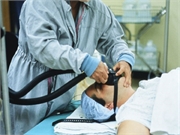WEDNESDAY, June 17, 2020 (HealthDay News) — Anesthesiologists can help save the planet, a new study suggests.
Increased use of regional anesthesia instead of general anesthesia may help reduce greenhouse gas emissions that contribute to climate change, according to researchers at the Hospital for Special Surgery in New York City.
Unlike general anesthesia, regional anesthesia doesn’t use volatile halogenated agents, such as desflurane, or nitrous oxide. These are greenhouse gases that can remain in the atmosphere for up to 114 years, the researchers noted.
Instead of those gases, regional anesthesia uses a local nerve block along with intravenous sedatives.
“Increasing the use of regional anesthesia is potentially good for the climate, improves the quality of care (at least for hip and knee replacements), and may allow individual practitioners to take personal responsibility in the fight against global warming,” said Dr. Christopher Wu, an anesthesiologist at the hospital, and colleagues.
In 2019, the hospital decided to use regional anesthesia in as many hip and knee replacements as possible. Of the 10,485 such procedures performed that year, only 4% used general anesthesia.
The hospital’s increased use of regional anesthesia saved the equivalent of nearly 27,000 pounds of coal burned, 2,750 gallons of gas, 60,500 car miles, or 3.1 million smartphones charged, according to the study authors.
In 2009, there were more than one million hip and knee replacement procedures in the United States. The researchers calculated that if all of these were done under general anesthesia, that would have resulted in 112,000 kg (nearly 247,000 pounds) of desflurane and 9,000 kg (about 20,000 pounds) of nitrous oxide released into the atmosphere.
That’s equivalent to the greenhouse emissions generated by 3.2 million pounds of coal burned, or 333,000 gallons of gas used, 7,350,000 car miles, or 378 million smartphones charged, they said.
The study was published June 16 in the journal Regional Anesthesia & Pain Medicine.
“This certainly is not a complete analysis, as we have not calculated how the manufacture of regional anesthetic agents or the impact of the plastics involved in regional anesthetic kits might affect the earth compared with volatile anesthetics,” the researchers noted in a journal news release.
The study authors also acknowledged that not all surgeries can easily be switched to regional anesthesia.
“Although no definitive data can provide us with the specific contribution of anesthetic gases to the worldwide greenhouse gases, studies estimate that health care systems generally are responsible for 5% to 10% of the national pollutant emissions,” the authors wrote. They added that anesthetic gases in the United States contribute to approximately 50% to 60% of an operating theater’s carbon footprint.
More information
The U.S. National Institute of General Medical Sciences has more on anesthesia.
Copyright © 2025 HealthDay. All rights reserved.

